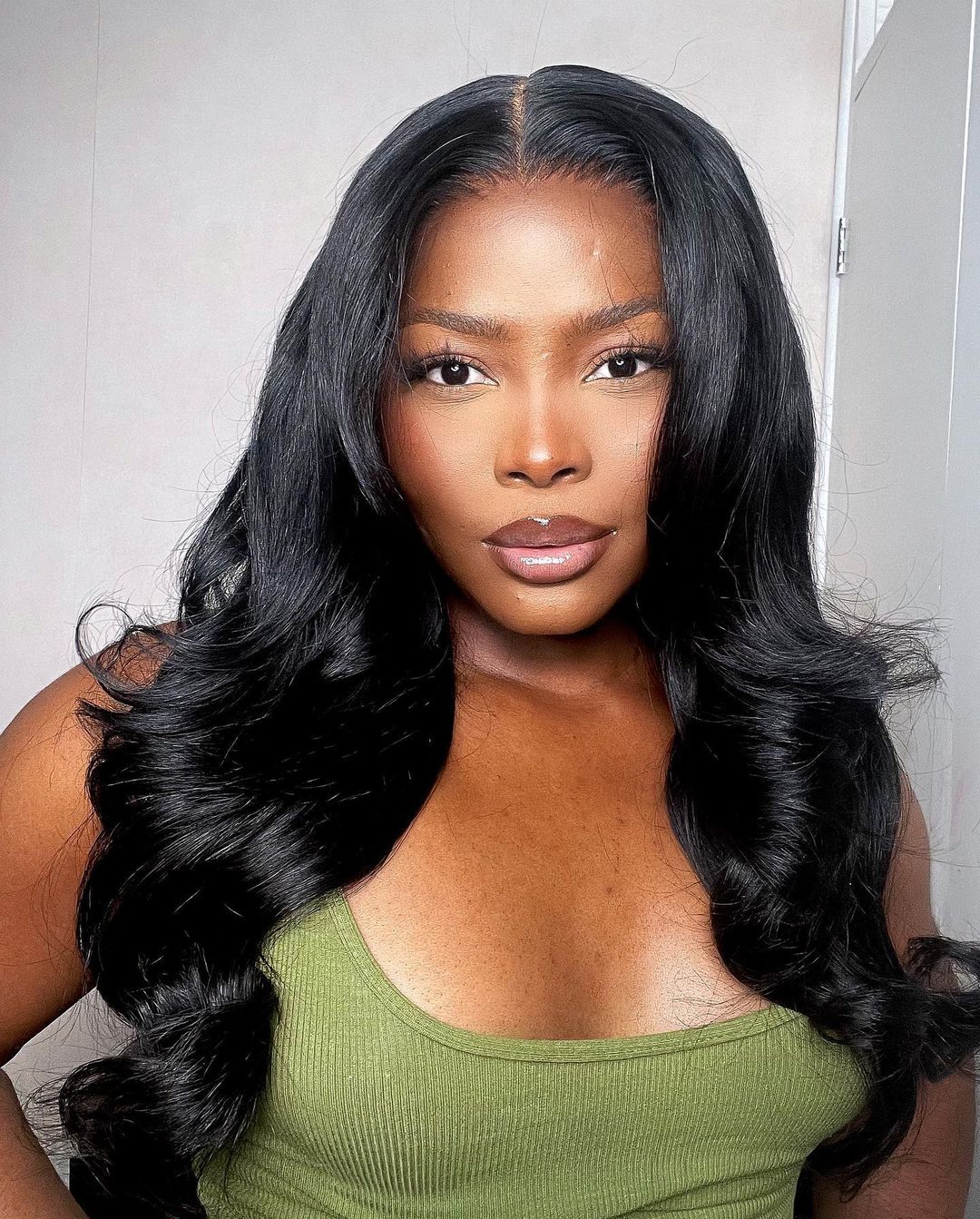Wig Density - How to choose the perfect hair density for your wig

Wig density is one of the most important aspects of any unit, and if you don't choose the right hair density, it will affect everything from your wig care routine to the way your wig is placed.
Unfortunately, when it comes to choosing the right wig density, it can be frustrating. That's why we're here. In this article, we'll tell you all about wig density and how to choose the perfect density for your next wig.

What is wig density?
Wig density measures how full your wig is: it is expressed as a percentage from low hair density (50-60%) to high hair density (200% and above). The density of the wig directly affects the fullness of the wig worn on. A low density wig will look thinner, while a high density wig will look fuller.How wig density is classified
Wig density has many options, ranging from 50% to 250%. Densities are also classified as low, medium or high density. Let's explore all the wig densities in the list below.
- 60 - 90% density: This is the lowest density available - it is often described as extra light.
- 100 - 110% density: This is another very light wig density that you will not find on the market.
- 120 - 130% density wig: This density is the standard for the wig market. It is favored by many due to its subtle volume and natural fullness.
- 150% Density Wig: 150% density is for those who like to add a little fullness to their units. Due to its popularity, it is easy to find.
- 180% Density Wigs: 180% density wigs are a little fuller than 150% density wigs. This level of density is perfect for short wigs and long wigs.
- 200% Density Wigs: 200% density wigs are considered voluminous. They are great for longer styles and looks, but still work well for buns and shorter styles.
- 250% Density Wigs: 250% density wigs are the fullest, most luxurious wigs on the market. They are perfect for big celebrity-inspired looks.
- Low Density Wigs (50-100%): Low density wigs are best suited for people with naturally thinning hair. Low density wig caps are also used on the front of the wig to create a natural hairline.
- Medium density wigs (130-150%): medium density wigs have more volume and fullness than low density wigs, providing the wearer with enhanced styling options.
- High density wigs (180-250%): High density wigs give you the most fullness when you're feeling glamorous and want to make a lasting impression. The most popular influencers posting hair photos and videos on Instagram and
TikTok are wearing high-density wigs. Contrary to what some sources say, high-density wigs look very natural.
Why you should care about wig density
Wig density may be confusing to some and annoying to others, but one thing is for sure - it matters. It directly affects how your wig looks on your face, the styles you can create, how the device feels on your head, and more. Let's look further into the details in the following sections.
- Density affects the appearance of the wig - a lower density wig will be significantly thinner than a higher density wig. If you want an attractive look, a high density wig will provide you with all the volume you need to achieve it. In addition, a higher density wig will provide you with enhanced styling capabilities, while a lower density wig may not be enough to accomplish certain looks.
- Density affects your wig care routine - The recommended wig care routine will be different for low, medium and high density wigs (more on this later).
- Density affects your wig wearing experience - You'll feel like a queen when you comb your hair back and forth in a high density wig. A lower density wig may not give you the same luxurious experience.
- Hair density affects price - High density wigs cost more than low density wigs. This is simply because there is more hair on a high density wig.
Hair density and hair thickness are very different.
In this section, we will help you understand both terms.

On the other hand, hair thickness refers to the width of individual hairs. Some hairs are fine and slender, while others are coarse (or thick).
Wig density recommendations regarding length
Certain wig densities will look different on different hair lengths. While the wig density you choose should match your personal preference, the following suggestions can help you choose the right wig density for your wig length.
- Short (6 inches to 10 inches): For short hair types, we recommend choosing a density between 120% and 150%. These densities look the most natural and will reduce the chances of your style being too bulky.
- Medium (12" to 16"): For medium length styles, we recommend choosing a density between 130% and 180%. Choose your specific density based on the volume you prefer.
- Long (18" to 22"): For long hair, it is best to choose a higher density to provide adequate volume and fullness. Choose a density between 150 and 250%.
- Extra Long (24 inches to 30+ inches): For extra long hair, a density of 250% is recommended. It will ensure that your hair is full from root to tip.

How to choose the right wig density
Choosing the right wig density requires you to consider many factors, including your lifestyle, age, and more. Let's dive into these factors and more to help you choose the right wig density for you!
- Your preferred hairstyle and length: When choosing a wig density, it is important to consider whether your hair is long, short, curly, wavy, etc. Different hair textures and lengths have a big impact on the overall appearance of a wig. High density works well with longer styles and straight hair. Low density is best suited for shorter styles and thicker hair.
- Your natural hair density: If you wear your hair out a lot and want your wig to look like your own hair, you should choose a density that is similar to your natural density. For example, if your natural hair is fine and thin, you should choose a wig with a density close to the 130% to 150% range. On the other hand, if your natural hair is very thick and full, a higher density wig (180- 250%) will give you the most natural look.
- Your lifestyle: Your lifestyle is one of the most important things to consider when choosing a wig density. If you sweat a lot or do a lot of strenuous physical activity, you should choose a wig with a lower density to keep you cool. On the other hand, if you want to wear a wig on date night or girls' night, a high density wig will give you the fullness you need to turn your head!
- Your age: You may want to consider your age when choosing a density level for your wig. As we get older, our hair naturally thins. So, if you want a realistic look and you are over 50, you may want to choose a wig with a lower density.
- Hair texture: When choosing density, consider the texture of the desired wig. For example, a curly texture gives the illusion of fullness, so you may not need a wig in a curl. Straight wigs tend to look thinner, so choosing a higher density is usually a better choice.
- Material matters: wigs with the same density will look different depending on the quality of the hair and the material used. For the best overall look, we recommend that you choose a wig made from 100% virgin or human hair.
What to do if the density of your wig is not right for you
Sometimes you bring a wig home and realize that the density is not correct. When this happens, you have a few options.
If the density of your wig is too low, you should take the following steps to add more volume and fullness.
- Remove a small section of the wig and backcomb them to create the illusion of more volume. To do this, drag the comb from the center axis of the section and pull it repeatedly toward the roots.
- Use some hair clippers to dull your wig. Doing so will create the illusion of added thickness.
- Use a curling iron, flat iron or curling iron to add some curls or waves to your wig to get more volume.
- Try adding some dry shampoo to the roots of your wig to add volume.
If you purchase a wig with too much hair density, try any of the following tips.
- Use some thinning scissors to thin the length of the wig.
- Pull out the perimeter of the wig to get a more natural looking hairline.
- Apply some mousse to your wig, cover it tightly with a scarf, then remove the scarf to reduce the volume on top of your head.
- Straighten your wig until it is straight to reduce volume.
Wig care for different densities
For all densities, you should take steps to reduce the chances of shedding. You can do this by using a knot tying device, handling the lace gently (don't scratch or pull), avoiding hot water, and handling and combing it gently.
Let's look at how to care for wigs of different densities:.
- How to care for low density wigs- For low density wigs, it is important to keep them clean and be extra gentle when doing so. In addition, you should always use lighter products so as not to weigh down the wig's strands. You can also use mousses and shampoos that are specially formulated to add volume.
- How to care for medium density wigs - Medium density wigs are the easiest to care for. You can use a variety of products to keep them moisturized and beautiful. If you want to tame your wig or give it more hang time, use a thicker, heavier product. Don't forget to wash your wig regularly with a shampoo and conditioner formulated for wigs.
- How to care for high-density wigs - With high-density wigs, you should be careful to clean the wig thoroughly - this is critical with high-density wigs because of the amount of hair on the wig. Also, don't be afraid to use a lot of hair care products.






Leave a comment